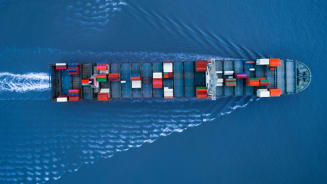Marine Insurance and Risk Management
Global Marine Practice Overview
Aon’s global marine practice is a leading provider of insurance and risk management solutions for ship owners and operators, shipyards, port and terminal operators, shipbuilders and repairers, marine construction projects, yachts, subsea operators, plus logistics and supply chain companies. Our cargo clients include manufacturing, heavy industry, auto, retail, food and beverage, life sciences and technology.
Leveraging the deep industry knowledge of both inland marine and ocean marine risk and our global network of colleagues, including 250 dedicated to marine insurance services, we provide clients with the advice and tools needed to make better decisions about protecting their people and projects.
At a high level, our risk capabilities for marine clients include specialist claims management, average adjusting, risk consulting and risk solutions to support business operations across cargo, shipping, port and terminal operations and logistics, and more.
By the Numbers
When you partner with Aon, you’ll gain access to scale and insights spanning an entire industry.
-
250
Our practice is home to 250 marine specialists operating around the world.
-
$3B
Our practice placed over $3 billion in insurance premiums last year.

Article
The Evolving Threat of Cargo Theft: 5 Key Mitigation Strategies
Cargo theft in the transportation industry is escalating, driven by sophisticated criminal tactics that exploit both physical and digital vulnerabilities. Businesses must adopt proactive risk management strategies to counter these evolving threats.
Comprehensive Insurance Coverage for Global Marine Clients
We use placement volume, broking experience and Aon’s global network to provide global marine clients with industry-leading terms and conditions across a wide range of insurance coverage areas, including:
-
Cargo
- Project cargo insurance/marine delay in start-up (DSU)
- Marine package policies and global program
- General cargo insurance
- Stock throughput insurance
- Excess storage insurance
- Freight and logistics
-
Port Operations and Marine Liabilities
- Transport and logistics liability
- Maritime employers liability
- Marine general liability
- Umbrella liability
- Ship repairer’s liability
- Charterers liability
- Professional indemnity
- Excess liabilities
- Terminal operator
- Port authority liabilities
- Marine trades
-
Shipping
- Hull and machinery
- Increased value/hull interest
- Loss of hire
- War risks
- Marine equipment
- Charterers' liability
- Protection and indemnity (P&I)
- Crew personal accident

Industry Overview
Transportation and Logistics
Who We Partner With
Our practice focuses on providing comprehensive insurance and risk management services to the marine, cargo and logistics industry.The information contained on this page and the rest of this website is subject to the terms and conditions found here.
Related Insights
-

Article
Reshoring: Managing Risks and Building Resilience Closer to Home
Proactive risk management and data-driven reshoring strategies can empower risk managers in logistics companies to navigate supply chain complexities with confidence.
-

Article
Client Alert: Responding to Heightened Risk in the Middle East
The current operating environment in the Middle East is increasingly complex and multifaceted, characterized by ongoing conflicts in Gaza, Israel, Lebanon and neighboring states, alongside significant changes in the business and insurance environment.
-

Report
Marine Loss Control - Safe Ocean Transportation of New Electric Vehicles
Global sales of electric vehicles (EVs) have been steadily increasing, a trend which is expected to continue for the foreseeable future. This has resulted in a growing number of EVs being shipped aboard roll-on/roll-off (RoRo) vessels, which handle the overwhelming majority of vehicle shipments.
-

Report
P&I Bulletin, July 2024
With the latest set of P&I Club financial results now published and the February 2024 renewal behind us, our latest bulletin assesses the current state of the market and what it might mean for the year ahead.


